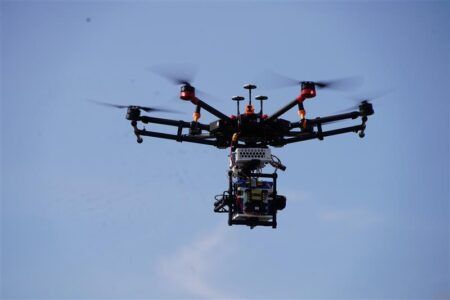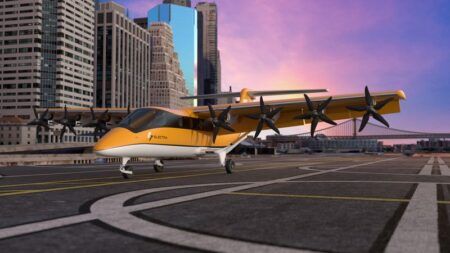Beyond Aero has successfully completed manned flights in a hydrogen-electric aircraft using a fuel cell.
The test flights, which were flown earlier this month from the Gap-Tallard airfield in Southern France, are the first manned hydrogen flights to be conducted in the country. The pilot was Paul Prudent and the aircraft a G1 Aviation two-seater ultralight aircraft retrofitted with Beyond Aero’s hydrogen-electric powertrain.
The hydrogen powertrain drives a single propeller with two-thirds of its power coming from a hydrogen fuel cell and the remaining third supplied by batteries. The fuel cell was fueled by 1.2kg (2.6lbs) of gaseous hydrogen stored in three tanks at 340 bar, generating a maximum electrical power of 85kW.
The flight test campaign, which started in January, included 10 take-offs and two complete flights. The Blériot prototype reached an altitude of 2,300ft above sea level and a climbing speed of 110km/h (68mph).
The flight test campaign was carried out to validate the demonstrator and the feasibility of the powertrain architecture. Engineers conducted a three-month ground testing campaign to prove the reliability of the powertrain before the test flight campaign, which included fixed-point tests at high thrust levels and rolling tests.
Testing and development with the Blériot prototype aims to address technological challenges related to hydrogen, optimize weight and address integration constraints. The team will then develop a 1MW propulsion system that places the two electric-powered ducted fans on the rear of the fuselage.
Eloa Guillotin, co-founder and CEO of Beyond Aero said, “It’s a big milestone for the company but only the beginning for the New Aero industry. We’ve continued France’s pioneering legacy in aerospace and mixed it with the modern American mindset to define the next chapter with action. Aviation will be electric, let’s make it happen together!”
Beyond Aero, which was founded in 2020 and based at Toulouse-Francazal Airport in France is developing the BYA-1, an eight-passenger business jet that will have a range of 1,500km (930 miles), and a cruise speed of 573 km/h (356mph).
According to the company it has signed letters of intent for 72 aircraft, with a value of US$580 million.
The BYA-1 will use two 500kW electric ducted fans and a half-moon-shaped air inlet at the rear to cool the powertrain. The design places the hydrogen fuel tanks in a fairing under the fuselage to avoid compromising space in the cabin.
Beyond Aero is using a low-temperature proton exchange membrane fuel cell in tandem with batteries to boost power during take-off and acts as a backup in the propulsion system. The company plans for the aircraft’s propulsion system to first use gaseous hydrogen and later be converted to pressurized liquid hydrogen.
Dr Matthieu Pettes-Duler, head of powertrain at Beyond Aero said, “When Blériot landed, it was at this moment that I fully realized that Beyond Aero had just achieved a major milestone in its development.
“Seeing this single-engine aircraft make its first flight with nominal parameters underlines the achievement of years of dedicated effort to get our hydrogen-electric vision off the ground. Many thanks to our exceptional test pilot, Paul Prudent, and the entire dedicated team who made this project a reality.”




